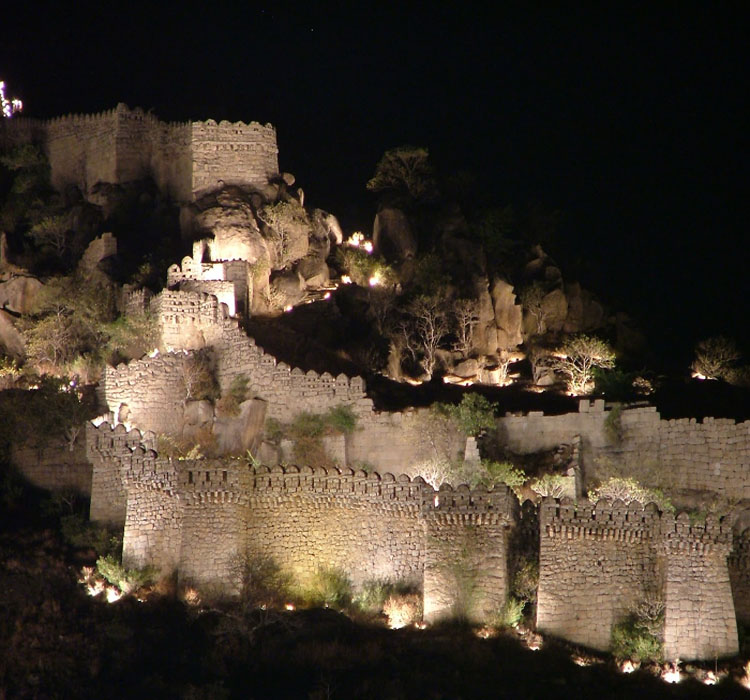Bhongir Fort:

Sometimes, there are locations that are relative unknowns that are just as amazing
and spectacular as those that get applied all over the information and tourist sites.
That is why when someone goes on a holiday to some international position, an schedule
set by a journey agent or vacationer organization is not always a good option. There
is still much to be said about finding less well-known destinations in out-of-the-way
places; it harkens returning to enough time when there was miracle in finding something
that is relatively low profiled. Case in point: Bhongir Fort in the municipality
of Bhongir, in Hyderabad.
The fort is designed upon a single rocky hill in Bhongir, a city in Andhra Pradesh,
in the Nalgonda district of the state.. It is situated some 48 kilometers away from
Hyderabad. The Western Chalukya leader, Tri-bhuvana-malla Vikram-aditya VI, designed
the fort from one single monolithic rock in the 12th century; consequently, the
fort was initially known as Tribhuvanagiri, after him. Progressively, across the
hundreds of years, the name metamorphosed into Bhuvanagiri (or Bhuvana’s Hill),
and gradually, into Bhongir, its existing name. The hill upon which the fort itself
is built is about 500 feet high, and spread to about 40 acres of land.
Regarded essentially impregnable by infiltrating military then, the fort has a exclusive
egg-shaped development with two places that are secured by large stones. A moat
encircles the fort and the place itself has a large underground chamber, an armory,
stables, and snare gates, among others. These can still be seen even now, which
creates for some amazing watching for guests. The citadel situated on the top of
the mountain gives a amazing bird’s-eye perspective of the region. According to
legend, Bhongir Fort once had an underground passage that leads directly to Golconda
Fort. This, of course, has never been proven.
|
|
Bhongir Fort organised its own against attacker military but by the Fifteenth century,
with the introduction of gunpowder, cannons had decreased its ideal significance.
It lastly went to the Bahmani Sultans who tried to remodel it, and thus, provided
it an Islamic design. It became a chair to the regional governor, and a jail for
Qutub Shahi throne pretenders. By the 18th century, the fort has fallen into decay,
and until recently, it had just remained a silent fortification ruin, covered in
its long but mysterious past.
|
|